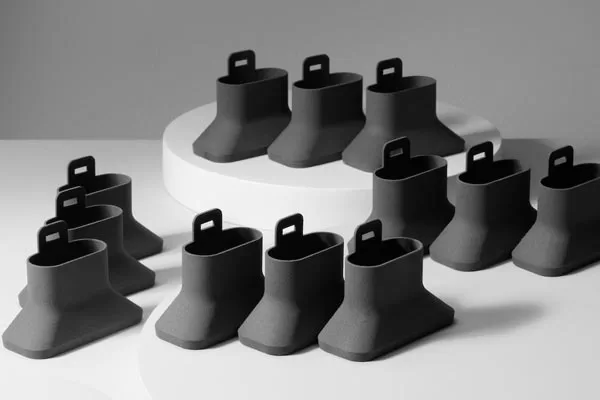Prototyping is an important aspect of the product development process since it keeps the company competitive. Despite major breakthroughs in the process, product development remains difficult. As a result, many businesses are seeking for new ways to make this phase more efficient.
A prototype is a physical representation of a concept that is frequently used to test and assess the design. Prototypes should be rapid, safe, and inexpensive to build in this regard. Rapid prototyping can help with this.
Rapid prototyping, as the name implies, entails a variety of manufacturing techniques that are used to quickly and cost-effectively build a part or product, most commonly through additive techniques.
Product designers and engineers can use CAD data to generate proof-of-concept models utilizing fast prototyping. It speeds up the process and allows for quick design adjustments in response to input and testing.

3D printed parts
What Is the Importance of Rapid Prototyping?
A prototype is useful in product development for a variety of reasons. Stakeholders need confirmation of the design before it can be approved, in addition to having a tangible representation to view, touch, and try.
Another reason for the importance of a prototype is to evaluate the viability of a concept and to determine if the design meets all of the requirements. Before moving into full production, this prototype is also required to evaluate the product and search for improvements. Prototypes also serve as a link between the design phase and the final manufacturing run. You can use it to test the market and assess customer response on the product.
There are two types of prototypes: form and function. The purpose of the form is to show how the concept and design will look. This prototype will have the same appearance as a finished part, but it will not work. The other type will work OK but will not look polished. When you mix these two elements, you get a 3D model that looks and function correctly.
Rapid prototyping’s Importance in Product Development
The design process necessitates the use of rapid prototyping. For product designers and engineers, its benefits are novel. We can see the flows or identify the places with issues with a full-scale model from a design before it goes into full production.
Clay or wood are used in traditional prototyping process producing mock-up displays. For others they resort to fabrication, which takes longer, is more expensive, and is more difficult to create.
Mock-ups are representations of the concept’s shape and size, whereas constructed models can depict the entire design with all of its working parts. The latter allows designers to test the function and ensure that it works.
Rapid prototyping encompasses a wide range of technologies capable of producing components and products straight from CAD data. These procedures are quick and precise, with the ability to customize any shape. CNC, 3D printing, SLS, SLA, and other technologies are among them. The final element will resemble the final product, which is the most important step in the product development process.
Types of Rapid Prototyping methods used in product development
Some of the popular Rapid prototyping techniques amongst producers and manufacturers include:
Photopolymerization or stereolithography
This technique uses a bath of photosensitive liquid is cemented by computer-controlled ultraviolet light. It was one of the first quick prototyping methods to be utilized in 3D printing, and as a result of its popularity among consumers, it has since become increasingly prevalent in the manufacturing industry.
Selective Laser Sintering (SLS)
This is one of the few technologies that can be used for prototyping in both metal and plastic. It is known that it uses powder to construct its prototype and heats the powdered material with a laser. When compared to Photopolymerization, the result is quite strong, but not as powerful.
The finished product’s surface is also not very smooth; thus further finishing work may be required to smooth out the end product’s surface. It’s a fantastic process that consistently delivers the greatest parts and products
